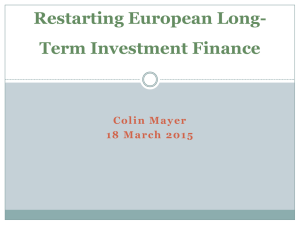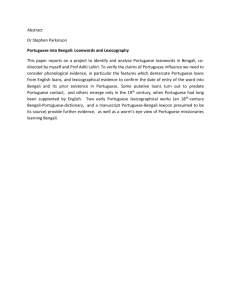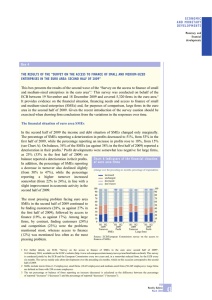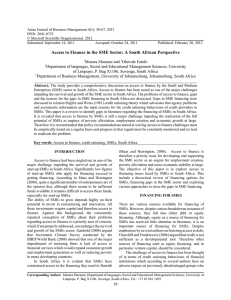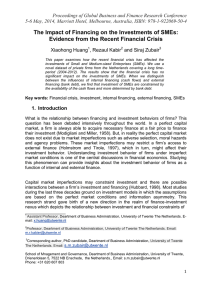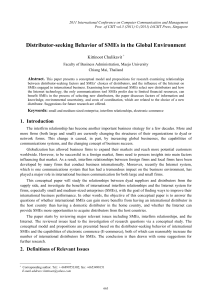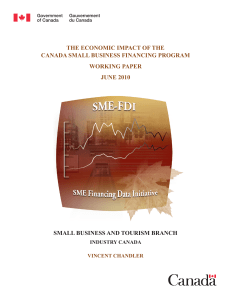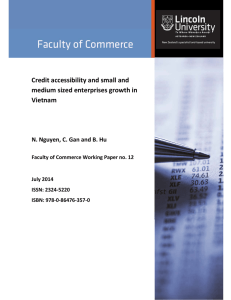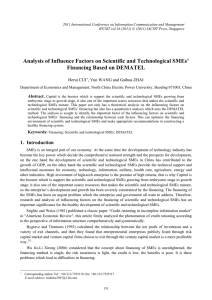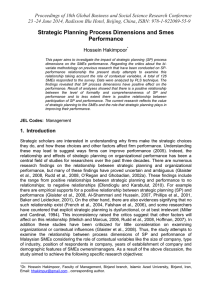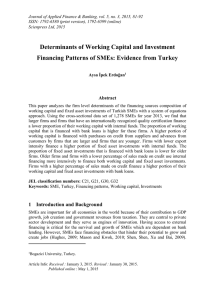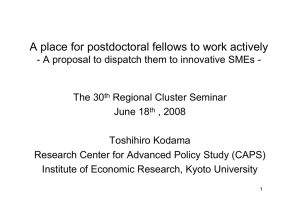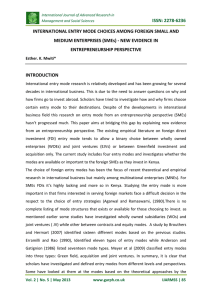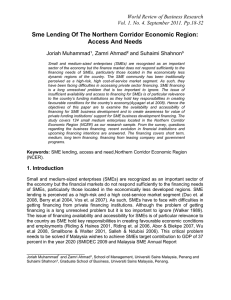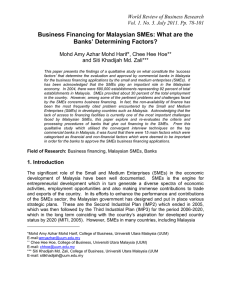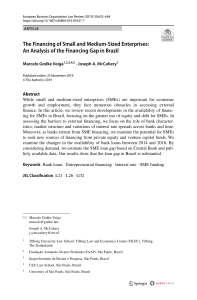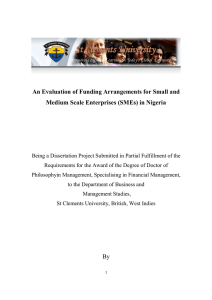CREDIT RATIONING FOR PORTUGUESE SMES Executive summary
advertisement
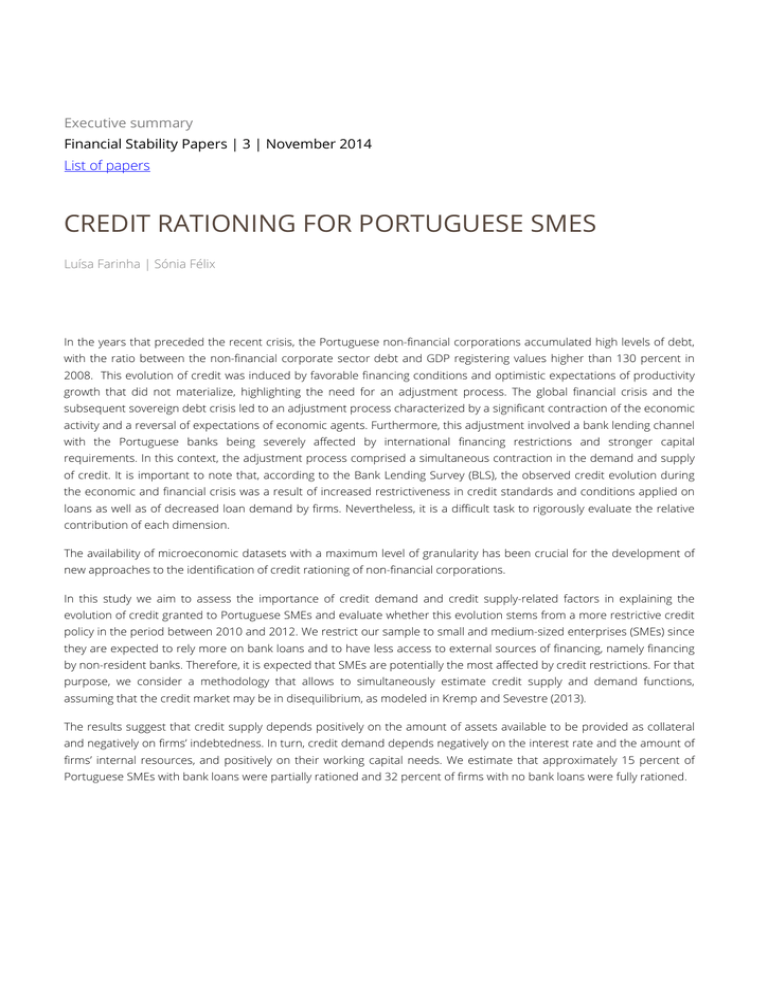
Executive summary Financial Stability Papers | 3 | November 2014 List of papers CREDIT RATIONING FOR PORTUGUESE SMES Luísa Farinha | Sónia Félix In the years that preceded the recent crisis, the Portuguese non-financial corporations accumulated high levels of debt, with the ratio between the non-financial corporate sector debt and GDP registering values higher than 130 percent in 2008. This evolution of credit was induced by favorable financing conditions and optimistic expectations of productivity growth that did not materialize, highlighting the need for an adjustment process. The global financial crisis and the subsequent sovereign debt crisis led to an adjustment process characterized by a significant contraction of the economic activity and a reversal of expectations of economic agents. Furthermore, this adjustment involved a bank lending channel with the Portuguese banks being severely affected by international financing restrictions and stronger capital requirements. In this context, the adjustment process comprised a simultaneous contraction in the demand and supply of credit. It is important to note that, according to the Bank Lending Survey (BLS), the observed credit evolution during the economic and financial crisis was a result of increased restrictiveness in credit standards and conditions applied on loans as well as of decreased loan demand by firms. Nevertheless, it is a difficult task to rigorously evaluate the relative contribution of each dimension. The availability of microeconomic datasets with a maximum level of granularity has been crucial for the development of new approaches to the identification of credit rationing of non-financial corporations. In this study we aim to assess the importance of credit demand and credit supply-related factors in explaining the evolution of credit granted to Portuguese SMEs and evaluate whether this evolution stems from a more restrictive credit policy in the period between 2010 and 2012. We restrict our sample to small and medium-sized enterprises (SMEs) since they are expected to rely more on bank loans and to have less access to external sources of financing, namely financing by non-resident banks. Therefore, it is expected that SMEs are potentially the most affected by credit restrictions. For that purpose, we consider a methodology that allows to simultaneously estimate credit supply and demand functions, assuming that the credit market may be in disequilibrium, as modeled in Kremp and Sevestre (2013). The results suggest that credit supply depends positively on the amount of assets available to be provided as collateral and negatively on firms’ indebtedness. In turn, credit demand depends negatively on the interest rate and the amount of firms’ internal resources, and positively on their working capital needs. We estimate that approximately 15 percent of Portuguese SMEs with bank loans were partially rationed and 32 percent of firms with no bank loans were fully rationed.
